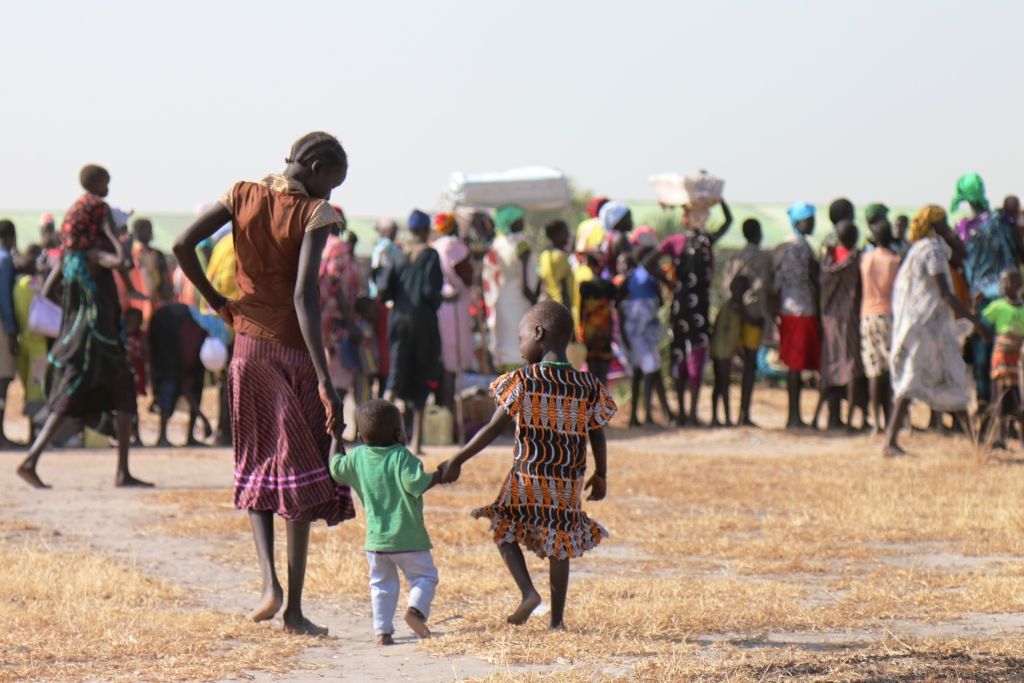By Marko Madut Garang
Before I was a humanitarian I was a teacher. I was proud of my profession, because in any country, it is a profession which commands respect. So I was surprised when I heard one of my students proclaim that ‘when I grow up I will never marry a teacher’, they said ‘why would anyone want to marry a man who works for free for half of his life?
This conversation sticks with me now, as I, like so many teachers in South Sudan, am now absorbed within the humanitarian aid world.
In South Sudan, and similar conflict affected places, teachers often go without being paid. Governments impose strict rules around humanitarian aid organisations paying teachers. Instead of finding ways to strengthen the capacity of schools in conflict affected areas, humanitarian organisations are depleting schools of teachers, hiring them as aid workers, actively decreasing the capacity of existing infrastructure, in order to make linear humanitarian gains. This has wider consequences for the protection of communities, not least the role schools and teachers play in preventing forced marriage and forced recruitment.
Some organisations, like TOCH, a South Sudanese NGO, and Oxfam, an INGO, take a different approach to capacity building and focus on bolstering existing capacity in the community, finding ways around restrictive rules, paying teachers incentives to integrate public health or protection messages within the curriculum if they fit, or in afterschool clubs, on the condition teachers continue teaching in local schools.
Humanitarians often lose sight of the wider community needs when responding to humanitarian crises, which can detract from the lifesaving work humanitarian organisations do and actually cause increased harm. The innovative approach to capacity building being piloted through the Protection in Practice project focuses on delivering humanitarian response at the same time as strengthening capacity, in the belief that a humanitarian response is strengthened through increased involvement of local organisations and that capacity building is strengthened when it involves learning by doing.
Despite the popular rhetoric emerging from the humanitarian sector promoting better communication with affected populations, strengthening local capacity and better responding to local needs, a separation remains between humanitarian response and capacity building which threatens to undermine the needs of people affected by crises. The discourse around humanitarian response is changing rapidly, with an acknowledgment that whilst humanitarian need is increasing, resources are shrinking and the best humanitarian response is one which is shaped by the affected communities. To ensure a more efficient and effective humanitarian system, we must bridge the gap between response and capacity building.
Humanitarian response and capacity building initiatives have historically operated in isolation, with humanitarian response often ignoring the capacities of local responders and the needs of affected communities. Local responders are often required to undergo lengthy formal training and take exams to provide evidence of the work they have been carrying out in their communities for decades, to prove to international actors that they should be considered for funds to help them protect their own communities.
The Protection in Practice project takes an altogether different approach to capacity building, with the fundamental driver behind the approach being that the needs of affected communities must be central to humanitarian work, including humanitarian capacity building. Oxfam and IRC have been piloting a holistic method of capacity building, which allows local protection actors and international organisations to respond to the protection needs of crisis affected communities, while at the same time building sustainable capacity within the humanitarian sector. This approach entails capacity building methods such as mentoring, flexible funding, secondments and co-implementation, as well as more formal training.
The format is driven by local protection needs and tailored to plug local organisations’ capacity gaps. For example, in the Democratic Republic of Congo young men faced particular protection concerns such as arbitrary arrest by authorities, which were difficult for local protection actors to respond to, as young men were not receptive to traditional community engagement efforts. Local responders worked with Oxfam to develop a project which combined capacity building for their staff around youth engagement, with a protection response targeting young people with protection messaging and referrals and dialogue with authorities.
The project included the following elements, interactive training in drama to help local responders engage youth in their protection work. This training was complimented with funding for community engagement activities, implemented by Oxfam and CEDIER. Protection staff from Oxfam were seconded and worked with CEDIER to provide mentoring and coaching on action oriented research on youth and protection. The project helped to increase capacity within the local organisation around youth engagement and within the community, the project has helped to decrease arbitrary arrests.
Through the project we’ve learned that local responders are dedicated to improving the capacity of their communities and have leveraged this flexible capacity building approach to enhance the capacity of other protection actors in their communities. Multiplying the effects of the capacity building they receive. Many organisations involved with PiP have trained as trainers and now lead protection training for other local organisations themselves, or some even going so far as to train international organisations. In Warrap State, South Sudan, TOCH even trained UNHCR, the protection cluster lead, as well as other cluster members on protection mainstreaming. This trend drastically shifts traditional power dynamics, so often perpetuated when international organisations take on the role of teacher and local organisations take on the role of pupil.
Through shifting the power in the humanitarian sector like this, the local organisations working on the Protection in Practice project ensure that the voices of their communities are elevated to a more powerful position, further improving humanitarian response.
The Protection in Practice project is part of the Disasters and Emergencies Preparedeness Programme funded by UK aid.

